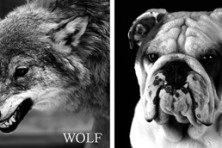Science Snippet: Dec. 23, 2015
- Share
- Tweet
- Pin
- Share

Ever wonder why the eyes of cats, rattlesnakes and lizards have vertical pupils? Or why goats’ eyes have horizontal pupils? Or why your pupils are round? To attempt to answer these questions, researchers completed a study of the eyes of 214 species of animals. (Pupils of some animals are shown in the accompanying figure.) Using computer models, they calculated the acuity of various pupils using geometry and optical physics, and then they correlated their findings with how each species obtained its food supply.
The pupil regulates the amount of light entering the eye on its way to the retina. The size and shape of the pupils are controlled by tiny muscles in the iris that can increase the size of the opening or cause it to constrict. In general, horizontal pupils provide more light from the right and left, allowing the animal to see a panoramic view. Goats, antelopes, and certain other grazing animals have horizontal pupils, which expand their horizon and might help alert them to predators moving in from the side. Vertical pupils, on the other hand, aid the eye in maintaining narrow focus points both close to and at some distance from the eye. The authors of the research study believe this would provide an advantage to ground-dwelling ambush predators, such as rattlesnakes, certain lizards and housecats. Circular pupils, as found in lions and humans, appear to be associated with a general-purpose eye.
Since not all grazing vertebrates have horizontal pupils and not all snakes have vertical pupils, however, a number of scientists question whether the shape of the pupil really confers an adaptive advantage for a vertebrate species. This kind of controversy is common among scientists and the truth must await further studies. (Banks et al, Science Advances, Aug. 7, 2015; New York Times, Aug. 7, 2015; other sources.)

